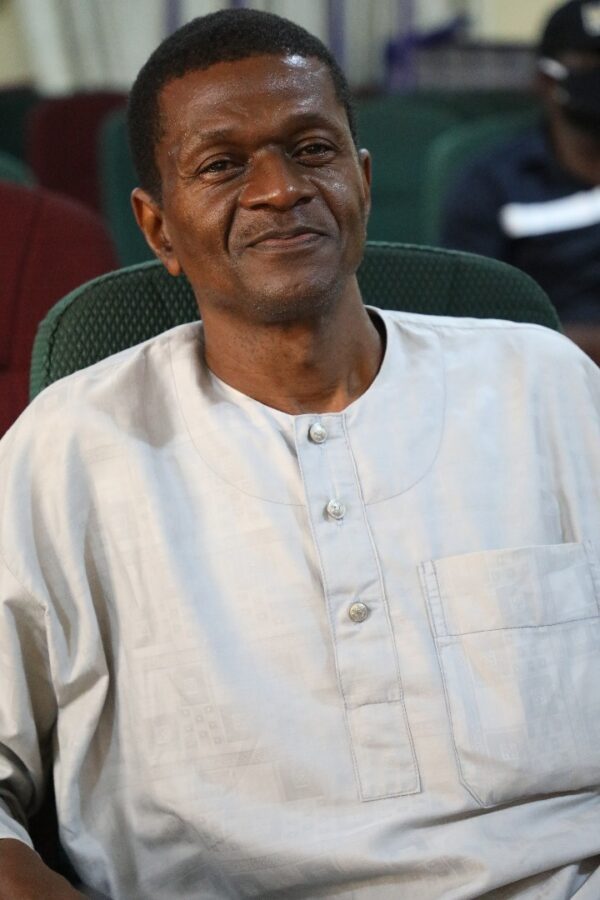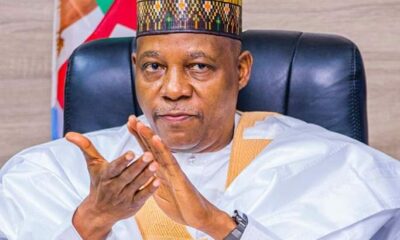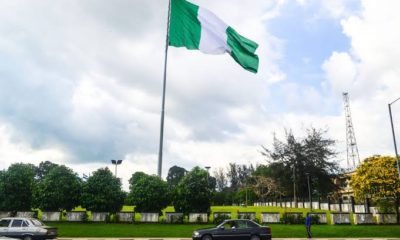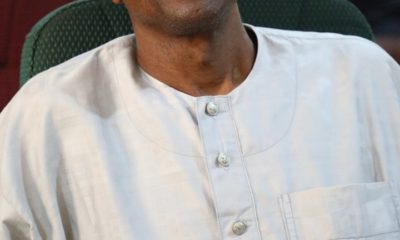Democracy & Governance
Contending Perspectives On Ex Anambra Governors -By IfeanyiChukwu Afuba
No other administration including the high – achieving Charles Soludo government has come near to equalling the record of national and international educational trophies won in the Obiano years. In 2019 alone, Anambra State took four out of the twenty-four President’s Teachers & Schools Award. No other State won more than one award. And for a measure of the quality teaching and learning that thrived in that dispensation, WAEC in 2017 announced five percent decline in exam malpractice from the State’s trend in past years (Vanguard, November 29, 2017).

Hopefully, now that the November 8, 2025 Anambra governorship election has come and gone, a rejoinder on the State’s past governorship tenures will be seen for what it is, a civic engagement with timeless issues of governance. _Premium_ _Times_ feature of November 3, 2025, on Anambra State’s political journey speaks to Anambra’s recent history. I wish to observe however, that this history is a matter of public records and that without situating same in context, the illumination and attendant lessons of history might be lost.
Yes, Abdulkareem Mojeed’s essay,
“Ex-Anambra governors, their remarkable feats and low moments” was a strong attempt at an overview of Anambra’s government and politics. It came across as feisty; far – reaching in scope, bold in analysis. But it omitted one or two important perspectives. Thematic inconsistency was at play in parts of the article. Observable unevenness in treatment of focal points of the essay detracted from it’s overall merit. The tilt of the commentary suggests media pressure of narrative. But, as our own Chimamanda Adichie warns, the dangers of a single story, are too consequential to ignore.
It is misleading to posit that
“Anambra has *elected* five governors since Nigeria’s return to democracy in 1999.” The operative word, elected should have been substituted with “had” in the above topic sentence. Dr Chris Ngige held office as Governor for two years and ten months in a flawed arrangement ostensibly created to avert leadership vacuum. The originating INEC’s declaration on which Ngige came into office was duly “set aside” by the courts and “the petitioner (Mr Peter Obi) returned as elected.” Obi’s subsequent exercise of a full term of four years was a conclusive statement. This distinction is important for historical clarity and political education.
Considering the emphasis on financial management in the article, it’s a big surprise that the review did not make a finding of the State’s indebtedness under the Chinwoke Mbadinuju administration. The debts depending on their short, medium and long term categories were managed by successive governments.
With fiscal discipline forming the study’s principal index of good governance, the silence on Ngige’s path – breaking exploit is curious. Dr Chris Ngige was the first Governor to conserve funds for an incoming government. His administration left N14 billion for Obi’s government. It bears stressing that N14b in March 2006 was a lot of money. An appraisal of the “major achievements and shortcomings” of the State’s governors ought to rectify this oversight. Someone once said that the cash asset should not be regarded as handover to the successor because Ngige by his sudden exit, did not consciously seek to establish the legacy. Notwithstanding the inanity of the idea, let it be noted that the hostility of the Olusegun Obasanjo presidency served notice of Ngige’s fate. Peter Obi’s red – hot election petition needed only the freewill of the judges to succeed. Ngige saw his downfall coming and could have chosen to squander the funds. He deserves credit for the feat.
Similarly, there are gaps in many third party accounts about return of schools to Churches. _Premium_ _Times_ credited Mr Peter Obi with the “decision to return mission schools to their original Church owners and support them with public funds.’ The truth of the matter is that the policy was initiated by Ngige. And his government actually began execution of the programme. _Vanguard_ newspaper, June 18, 2004, ran the headline: ‘Anambra NUT Kicks Against Return of Schools to Missionaries.’ The story written by Enyim Enyim tells us: ‘The
Nigerian Union of Teachers (NUT), Anambra State chapter yesterday cautioned Governor Dr Chris Ngige against plans by his administration to handover some secondary schools in the area to missionaries.The state Chairman of the Union, Comrade Anthony Ugozor who spoke exclusively with the _Vanguard_ said NUT would resist any attempt by the state government to handover schools to a private body.This is coming on the heels of governor Ngige’s announcement at a press conference in Awka that six schools had already been handed over to missionaries.’ Formal launch of the policy took place on September 15, 2005, with the return of 13 secondary and 51 primary schools. How the misconception on who engineered the process persists in the face of these public facts is a big question.
There are at least two instances of misperception in the assessment of Willie Obiano’s stewardship. The fanciful tale of assets without liability bequeathed to the Obiano govt by Peter Obi administration is represented as an article of faith despite authoritative submissions to the contrary. ‘Mr Obi
reportedly left behind savings exceeding ₦75 billion’ the analysis echoes. On what ground did the commentary embrace the controversial claim? On November 14, 2015, the Anambra State government made definitive statement on the subject. Media reports of the following day on the press conference addressed by Secretary to the State Government, Professor Solo Chukwulobelu, captured the articulated position with the headline: ‘There was no N7b.’ A review committee which included some members that also served in Obi’s administration determined that the total assets handed over stood at *N45b.* A glance at some discrepancies in the transition papers. Local currency savings at time of compilation of handover notes was N13b. But at date of Obiano’s swearing in, the account had been drawn down to N9b. There were no issues with the savings in foreign currency. But the list of other investments was problematic. Anambra State government’s N1.4b stake in Intafact Beverages was erroneously given as N3.5b. Old investments by past regimes such as in Emenite Industries, Enugu and Orient Petroleum formed part of the N75b savings. After excluding the serial ineligible entries, the received cash, savings and investment totaled N44.5b. The downward figure does not detract from the fiscal discipline embodied by the reserves. Mr Peter Obi deserves plaudit for prudent management of resources.
The other half of the picture however is that the outgoing Obi administration left significant debts. The tendency by sections of the media to gloss over the transferred liabilities to the Obiano governorship does not change the fact. According to the National Bureau of Statistics, Anambra State external debt grew from $18.8m in 2006 to $45m in 2014. Records of the Debt Management Office show that the State had N2.8b internal debt as at 2014. On July 10, 2014, channelstv.com reported Obiano’s release of N1b for liquidation of inherited local government pension arrears. Following Industrial Court’s award of N1.5b judgement against Anambra State in the seven year legal battle by staff of Water Corporation and Environmental Protection Agency ( _Vanguard_ , July 18, 2014), the Obiano – led government expended N1.9b in November 2014 to settle the debt. A N2.4b CBN agric loan guaranteed by the preceding leadership was another instance of the inherited debts. Traffic of assets and liabilities from preceding to successor administrations is nothing unusual. Administration is a continuum with ever cost implications for governance.
What is unprogressive is the dogmatic denial of any form of debt commitment, as in the instant case.
The claim that under Obiano, ‘Anambra’s education standards declined’ is unfounded. The opposite was the position. No doubt, media manipulation is a fallout of Anambra’s politics in the past two decades. In the Obiano years, Anambra State recorded percent pass in WAEC exams in 2014; 65 percent 2015; 70 percent 2016; 71 percent 2017; 51 percent 2018; 70 percent 2019; 72 percent 2020; and 91 percent in 2022. It was Obiano who broke the jinx of accreditation and funding that enabled pioneer medical students of the state university to graduate after ten years of study in 2015! It was Obiano who introduced hazard allowance for teachers serving in the interior towards better distribution of teachers in schools. No other administration including the high – achieving Charles Soludo government has come near to equalling the record of national and international educational trophies won in the Obiano years. In 2019 alone, Anambra State took four out of the twenty-four President’s Teachers & Schools Award. No other State won more than one award. And for a measure of the quality teaching and learning that thrived in that dispensation, WAEC in 2017 announced five percent decline in exam malpractice from the State’s trend in past years (Vanguard, November 29, 2017).
The more popular and dominant narratives are not necessarily the correct versions.
The media has a duty to be more scrutinising especially with regard to competing claims and interests. We adopt Mbadinuju’s prayer: It shall be well with Anambra State.










